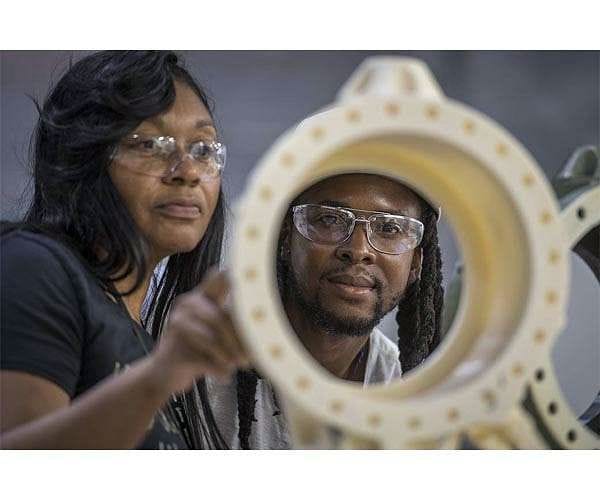![A 3D printed mold for insulation application [Source: Boeing]](https://fabbaloo.com/wp-content/uploads/2020/05/image-asset_img_5eb09927dafa1.jpg)
I’m reading about how NASA has been using 3D printing on their giant SLS rocket, and noticed they were using a technique we have not written about previously.
The Space Launch System (SLS) rocket at the moment is incomplete, and NASA is under the gun to speed up their work to meet new the proposed moon mission. One can imagine their engineers are developing all manner of efficiency improvements to meet those goals. One of them involves 3D printing.
Rocket engines are highly complex machines that are more than just plumbing and a big fire. They must endure horrific thermal and pressure stresses, making the designs quite challenging. Of particular concern are thermal effects, where some portions of the engines are spectacularly hot, while others must remain supercooled.
A common technique to assist in thermal management is to provide insulation. Traditionally this is been done by spraying a foam-like insulator on top of components. However, with today’s increasingly complex and compact designs there are many more tiny and inaccessible areas that are difficult to reach with traditional spraying technologies.
NASA’s approach was to leverage the CAD models for the regions. They used them to create 3D printable molds. These molds would be placed in such a way that liquid foam insulation could be safely poured into the mold and surround the intended components.
While this technique was used by NASA to build rocket engines, it seems to me that this approach could also be used by industry in many situations where complex overmold-casting might be required.
It’s quite fascinating to me to learn about unusual 3D printing techniques such as this, as it shows how much we really have yet to learn about this powerful technology.
What manufacturing issues do you have? Is there a way to potentially use 3D printing resolve those issues? These are the questions we should be asking all the time.
Via NASA











Healthcare 3D printing attempts to solve two problems that plague providing care: customization and cost.